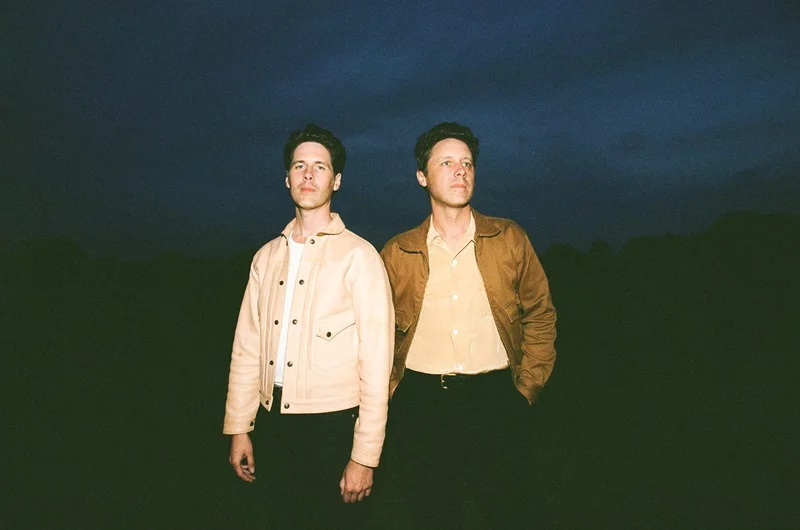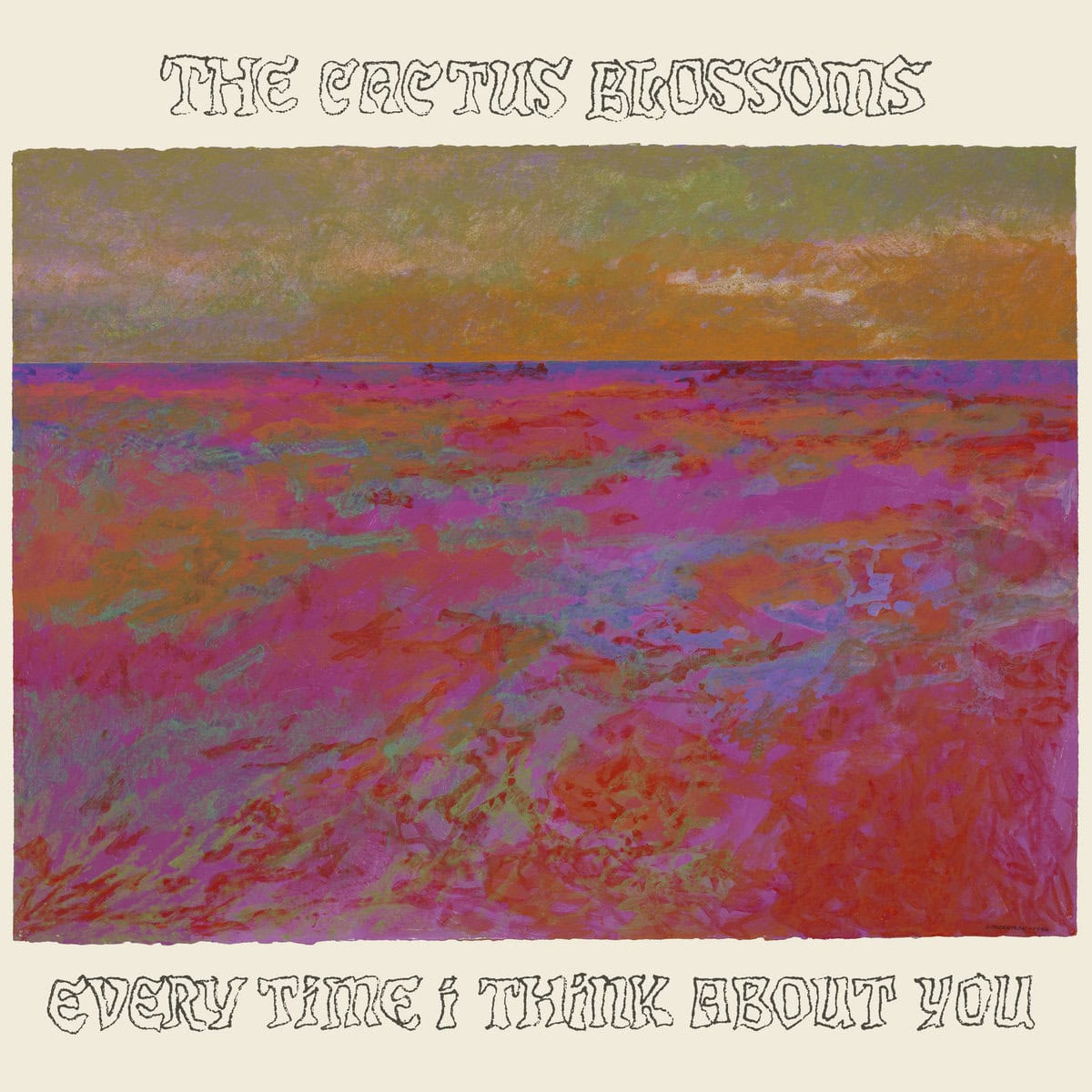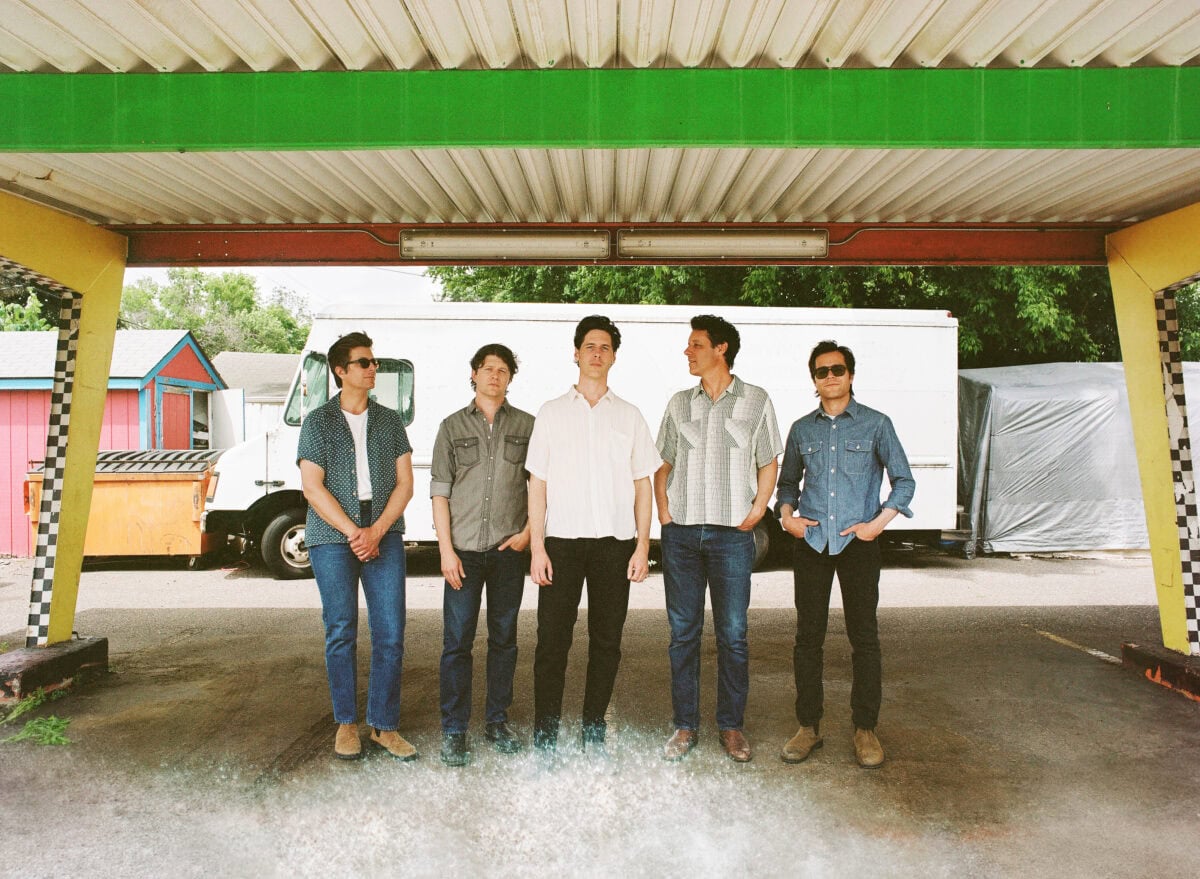La Face B a échangé avec le duo folk/country américain The Cactus Blossoms, en concert exceptionnel à Paris le 12 février pour présenter leur dernier album Every Time I Think About You

*Cette interview a été réalisée en anglais. Pour lire la version originale, rendez-vous plus bas. / To read the original english version, scroll to the bottom.*
La Face B : Vous avez grandi ensemble dans le Minnesota. A quel moment chacun de vous a-t-il commencé à jouer et écrire de la musique? Est-ce qu’il y a eu un moment décisif? Quelles ont été vos principales influences en grandissant ?
PAGE : J’ai écouté toutes sortes de musique, mais je me souviens que j’aimais beaucoup les trucs plus anciens de la collection de disques de mon père. Les Beatles, les Everly Brothers et Stevie Wonder étaient quelques-uns de mes préférés. C’est seulement à l’âge adulte que j’ai découvert le monde de la folk, de la country et du blues. J’ai enfin compris d’où venait tout le rock n roll que j’entendais en grandissant. Beaucoup de ces vieux morceaux des années 1920-1940 avaient etaient enregistrés en quelques prises seulement, ils avaient cette énergie brute et magique qui m’a envoûté.
JACK : Je suis un peu comme Page, mais j’étais beaucoup plus jeune que lui quand on était enfants. Cette différence d’âge de cinq ans se ressent de moins en moins avec le temps. Quand j’étais adolescent, j’essayais de mettre la main sur toutes sortes de musique, qu’elle soit ancienne ou nouvelle. Quelque chose dans les chansons de Bob Dylan a vraiment changé les choses pour moi. Highway 61 Revisited, Blonde on Blonde et Bringing It All Back Home ont déclenché un déclic. C’est ce qui m’a fait découvrir la chanson et m’a poussé à faire de la musique.
La Face B : Votre musique mélange souvent des sons modernes et classiques. Comment vous trouvez l’équilibre entre le respect des influences traditionnelles et la création de quelque chose de frais et contemporain ?

PAGE : On n’essaye pas intentionnellement de créer quelque chose qui sonne vieux ou nouveau. Tu connais l’expression « Tu es ce que tu manges » ? Je pense que cette phrase s’applique aussi aux musiciens, sauf qu’on mange avec nos oreilles. On écoute de la musique de tous les genres et toutes les époques et je suis sûr que tout ça se retrouve dans nos chansons, mais je pense que c’est mieux si ce n’est pas intentionnel et que les ingrédients s’assemblent naturellement.
JACK : Je n’ai jamais pensé honorer quoi que ce soit en particulier. Je ne suis pas nostalgique du passé, mais il y a des choses qui ont été faites il y a longtemps que je trouve intemporelles et belles… J’aime avant tout faire des chansons et des sons qui plaisent à mes oreilles.
La Face B : Le morceau titre de l’album, Every Time I Think About You, a un feeling de chaleur et de nostalgie. Qu’est-ce que cette chanson représente pour vous ?
JACK : J’espère que cette chanson sera comme un câlin chaleureux pour tous ceux qui ont perdu un proche.
La Face B : Something’s Got a Hold On Me introduit une ambiance southern rock à votre répertoire. Vous avez mentionné que l’inspiration est venue d’une chanson de Jimmie Rodgers. Est-ce que c’est un artiste qui a eu un impact particulier sur vous en tant que musiciens ? Comment la chanson s’est-elle construite ?
PAGE : Ha ! Oui, il n’y a pas plus southern que Jimmie Rodgers ! J’adore la musique de Jimmie Rodgers et son magnifique yodel. Il avait une chanson qui s’appelait Tuck Away My Lonesome Blues et j’aimais bien la façon dont le refrain commençait, avec la phrase « I really need ». Ca me faisait penser au désespoir et à l’avarice, et la chanson a émané de là. J’ai fini par inclure une autre référence à des paroles plus connues de Rodgers : « T for Texas – T for Tennessee » comme un autre clin d’œil à Jimmie.

La Face B : Vous avez enregistré l’album au studio Creation Audio de Minneapolis, connu pour sa riche histoire. C’etait la première fois que vous enregistriez un album dans votre ville natale ? Comment l’héritage du studio a-t-il influencé les sessions d’enregistrement ?
JACK : On avait enregistré notre album One Day à Minneapolis, mais c’était pendant la pandémie et on travaillait dans le sous-sol de Page. Là c’est la première fois qu’on a enregistré dans un vrai studio dans notre ville. C’est un endroit génial avec une histoire cool. Il y a une grande salle d’enregistrement, ce qui nous a permis de placer tout le monde les uns en face des autres, et un piano à queue qui sonne très bien, ce qui était merveilleux pour la session.
La Face B : La pochette de l’album est un tableau de George Morrison, un artiste amérindien du Minnesota aujourd’hui décédé. Comment vous avez choisi cette œuvre en particulier pour illustrer l’album? Qu’est-ce que ce peintre represente pour vous ?
PAGE : J’aime tout ce qui touche à ses peintures et je pense que c’est l’un des plus grands artistes de notre État. Les émotions capturées dans cette peinture semblaient bien correspondre à celles de notre musique. C’est sauvage et tumultueux, mais en même temps serein.
La Face B : La thématique d’aller de l’avant (moving on) revient tout au long de l’album. C’était un choix délibéré lors de l’écriture des chansons, ou c’est un thème qui a émergé organiquement au fur et à mesure du développement des morceaux ?
JACK : On voyage beaucoup, c’est peut-être inconscient. On a enregistré beaucoup de chansons au studio, et ce thème est apparu après qu’on ait décidé quelles chansons on allait garder.
La Face B : Vous avez sorti quatre albums sur les dix dernieres années. Est-ce que vous diriez que votre musique a beaucoup évolué au fil du temps, à mesure que vous avanciez dans la vie en tant qu’individus et artistes ?
JACK : J’imagine qu’on change plus qu’on le pense. Je ne réécoute pas nos albums, donc quand j’entends quelque chose qu’on a enregistré il y a des années, j’ai presque l’impression que ce n’est pas moi.
La Face B : Vos harmonies vocales sont une caractéristique essentielle de votre son. Comment votre approche des arrangements vocaux a-t-elle évolué au fil des ans, et en particulier sur ce dernier album ?
PAGE : Jack et moi avons des tessitures vocales similaires et donc on alterne les harmonies hautes et basses. Je ne pense pas que ça ait beaucoup changé au fil des ans, mais ca s’est peut-être relâché un peu. Il y a un équilibre à trouver… parfois, être « serré » peut être une bonne chose, mais ça peut aussi sonner robotique et ce n’est pas ce qu’on veut.
JACK : Aucun de nous deux n’écrit nécessairement en pensant à un duo ou à des harmonies, donc souvent, lorsqu’on se soumet nos idées, on cherche à voir s’il y a quelque chose de nouveau qu’on pourrait apporter à une chanson avec les harmonies. Parfois on en fait même un duo à part entière.

La Face B : Est-ce qu’il y a de nouvelles directions musicales ou des thèmes que vous avez envie d’explorer dans de futurs projets ? Comment vous voyez l’évolution du son des Cactus Blossoms dans les années à venir ?
PAGE : Je ne suis pas sûr, mais je te promets qu’on va continuer à expérimenter !
JACK : J’adore les synthétiseurs !
La Face B : Pour finir, avez-vous des recommandations d’artistes ou de chansons que vous avez écoutés récemment ?
PAGE : On est des grands fans des gens avec qui on a tourné dernièrement. Je recommande vivement d’écouter Erin Rae, Riley Downing, The Deslondes, Dean Johnson, Lou Hazel. Ils font tous de la très bonne musique.
JACK : Ecoutez aussi Big Hits of Mid-America Volume Three.
Retrouvez The Cactus Blossoms sur Youtube, Instagram et Facebook et en concert le mercredi 12 février a La Marbrerie
– ORIGINAL ENGLISH VERSION –
La Face B: As you grew up together in Minnesota, when did each of you start to play and write music, was there a triggering moment? What were your main influences growing up?
PAGE: I listened to all kinds of music growing up but I remember really loving some of the older music in my dad’s CD collection. The Beatles, The Everly Brothers, and Stevie Wonder were a few of my favorites. It wasn’t until I was an adult that I learned about the world of folk, country, blues. Then I finally understood where all of the rock and roll I heard growing up came from, and a lot of the older stuff recorded in the 1920s-1940’s was recorded in just a few takes and it had this raw energy that was magical and it put me under its spell.
JACK: I’m kind of in the same boat as Page, but I was a lot younger than him when we were kids. That five year difference in age gets a little smaller all the time. As a teenager I was all over the place trying to get my hands on all sorts of music whether it was old or new. Something about Bob Dylan’s songs really changed things for me. Highway 61 Revisited, Blonde on Blonde, and Bringing It All Back Home flipped a switch in me. That’s what got me into songs and set me off the journey of making music.
La Face B: Your music often blends modern and classic sounds seamlessly. How do you navigate the balance between honoring traditional influences and crafting something fresh and contemporary?
PAGE: We don’t intentionally try to create something that sounds old OR new. Do you know the phrase “You are what you eat”? I think this phrase applies to musicians as well, except we eat with our ears. We listen to music of all genres and time periods and I’m sure it all ends up in our songs, but I think it’s best if it’s not intentional and the ingredients just come together naturally.
JACK: I’ve never thought of myself as really honoring anything specifically. I’m not nostalgic about the past, but there are things that were done a long time ago that I think are timeless and beautiful… I like to make songs and sounds that are pleasing to my ears.
La Face B: The title track of the album, Every Time I Think About You, carries a warm, nostalgic feel. Can you share the inspiration behind this song and what it means to you personally?
JACK: I hope that song feels like a warm hug for anyone who has lost someone close to them.
La Face B: Something’s Got a Hold On Me introduces a Southern rock vibe to your repertoire. You mentioned the inspiration came from a Jimmie Rodgers song. Had Rodgers a particular impact on you as musicians? How did the song come together during the writing process?
PAGE: Ha! Yes, well it doesn’t get any more southern than Jimmie Rodgers! I love Jimmie Rodgers’ music and that beautiful yodeling. He had a song called Tuck Away My Lonesome Blues and I loved the way the chorus started with the line “I really need”. That line made me think about desperation and greed and the song grew out of. I ended up including another reference to a more well known Rodgers line “T for Texas – T for Tennessee” as another nod to Jimmie.
La Face B: You recorded the album at Minneapolis’ Creation Audio studio, known for its rich history. Was it the first time you recorded an album in your hometown? How did the studio’s legacy influence the recording sessions for this album?
JACK: We recorded our album One Day in Minneapolis, but that was during the pandemic and we were working in Page’s basement. This is our first time making a record at a proper studio in our hometown. It’s a great spot with a cool history. It has a large tracking room so we could have everyone set up facing each other, and there’s a great sounding grand piano that was wonderful to have for the session.
La Face B: The album features cover art by the late Minnesota Native American artist George Morrison. How did you choose that particular artwork to illustrate the album, and what significance does this painter hold for you?
PAGE: I just love everything about his paintings and think he’s one of the greatest artists from our home state of Minnesota. The emotions captured in this painting just seemed to fit the emotions of our music well. It’s wild and tumultuous but at the same time serene.
La Face B: You’ve mentioned that themes of ‘moving on’ recur throughout the album. Was this a deliberate focus during songwriting, or did it emerge organically as the tracks developed?
JACK: We travel a lot, so maybe it’s subconscious. We recorded a lot of songs in the studio, and that theme emerged after we decided which songs made the final cut.
La Face B: As you’ve now released four albums over 10 years, are there areas where you’ve noticed significant change in your music over time, as you’ve moved through life as individuals and as a band?
JACK: I imagine we’re changing more than we realize. I don’t listen to our own records, so when I hear something that was recorded years ago it almost sounds like it’s not me.
La Face B: Your harmonies are a defining feature of your sound. How has your approach to vocal arrangements evolved over the years, especially on this latest record?
PAGE: Jack and I have similar vocal ranges and we switch back and forth singing higher or lower harmonies with each other. I don’t think it has changed much over the years but maybe it has gotten a little looser. There’s a balance to find … sometimes “tight” can be a good thing, but it can also be robotic and we don’t want that.
JACK: Neither of us necessarily write with duo or harmony singing in mind, so a lot of times when we bring our ideas to each other we look to see if there’s somewhere new we can take a song with harmony. Sometimes even making it into a full on duet.
La Face B: Looking ahead, are there new musical directions or themes you’re excited to explore in future projects? How do you see The Cactus Blossoms’ sound developing in the coming years?
PAGE: I’m not sure, but I promise we’ll keep experimenting!
JACK: I love synthesizers!
La Face B: Finally, do you have any recommendation of artists or songs you’ve been listening to recently?
PAGE: We’re big fans of the folks we’ve been touring with lately. I highly recommend that you check out Erin Rae, Riley Downing, The Deslondes, Dean Johnson, Lou Hazel. They’re all making great music.
JACK: Check out Big Hits of Mid-America Volume Three
